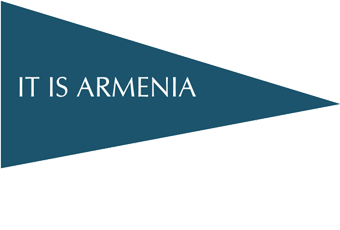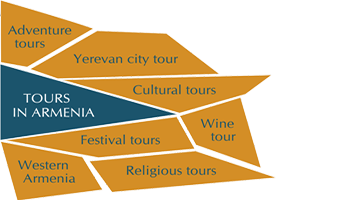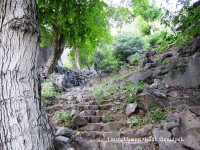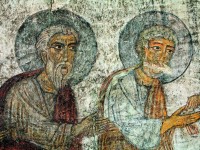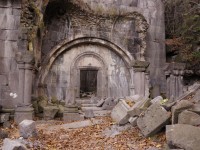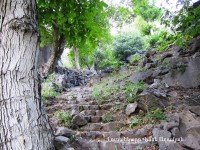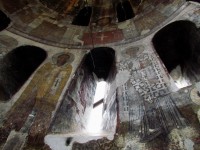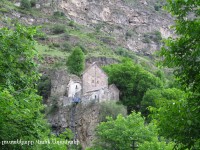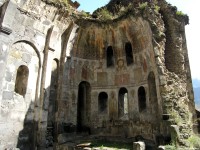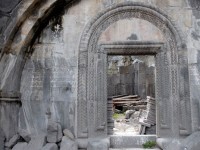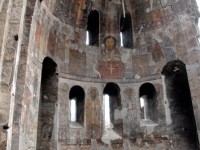Kobayr
Kobayr monastery is located in the Marz (region) of Lori, at the railway station Kober, on the left slope of the gorge of the Dzoraghet River, on a highland. It was built by the daughters of the king Kyurike II of the Kyurikyan kingdom in 1171. The monastery was one of the most important cultural centers of medieval Armenia and the activities of the famous chronicler of the 12th century David Kobayretsi are connected with it. It was converted into a Chalcedonian monastery in the early 13th century. The monastic complex consists of three churches, chapel-cemetery and dining room and was surrounded by a high fence with towers. The ruins of numerous chapels, khachkars (cross-stones) have preserved in the vicinity of the monastery. The oldest building of Kobayr is single-nave, vaulted church of Mariamashen, which is located in the eastern part of the complex, on the edge of a cliff. According to the preserved inscription (1171), the church was built by the daughter of the King Kyurike II, Mariam. Later, the chapel with rectangular building was attached to the southern part of the church. The main church of Kobayr (end of the 12th - beginning of the 13th centuries) is located in the south-eastern part of the monastery. It is a single-nave hall with rectangular building covered with semitubular vault. The sanctuary on the east side ends with the semicircular altar, which is lit through five windows, placed in two rows. The eastern facade of the church is tilled with windows with sculptured frames and high relief of the cross, which emphasizes the vertical axis of the facade. The chapel-vestry was attached to the main church from the north side. In 1279, the son of the count shakhinshakh Zakarian, Mkhargrdzel and his wife, Vaneni built the bell tower-graveyard of the monastery with the hall in the eastern part, with an altar and a bell tower with eight columns. The floor is covered with tombstones. The single-nave, vaulted second church (13th century) is located in the northern side of the monastery, in front of the main entrance. The dining room of Kobayr (13th century) is located to the west of the cemetery-chapel. Only the northern and eastern parts of the high fences that surrounded Kobayr have preserved. Kobayr became famous for its highly artistic frescoes, of which only a little part has been preserved.






